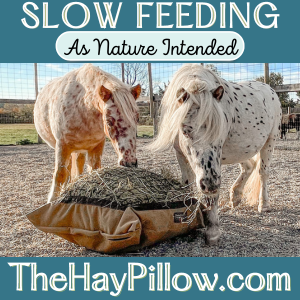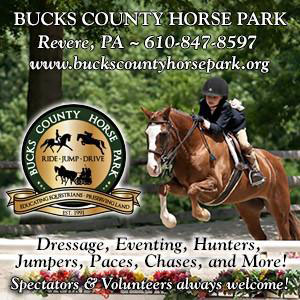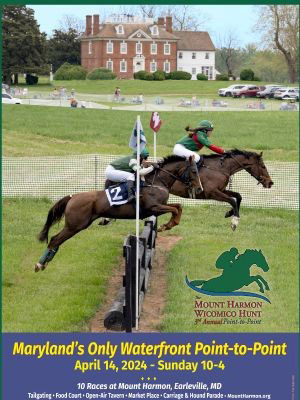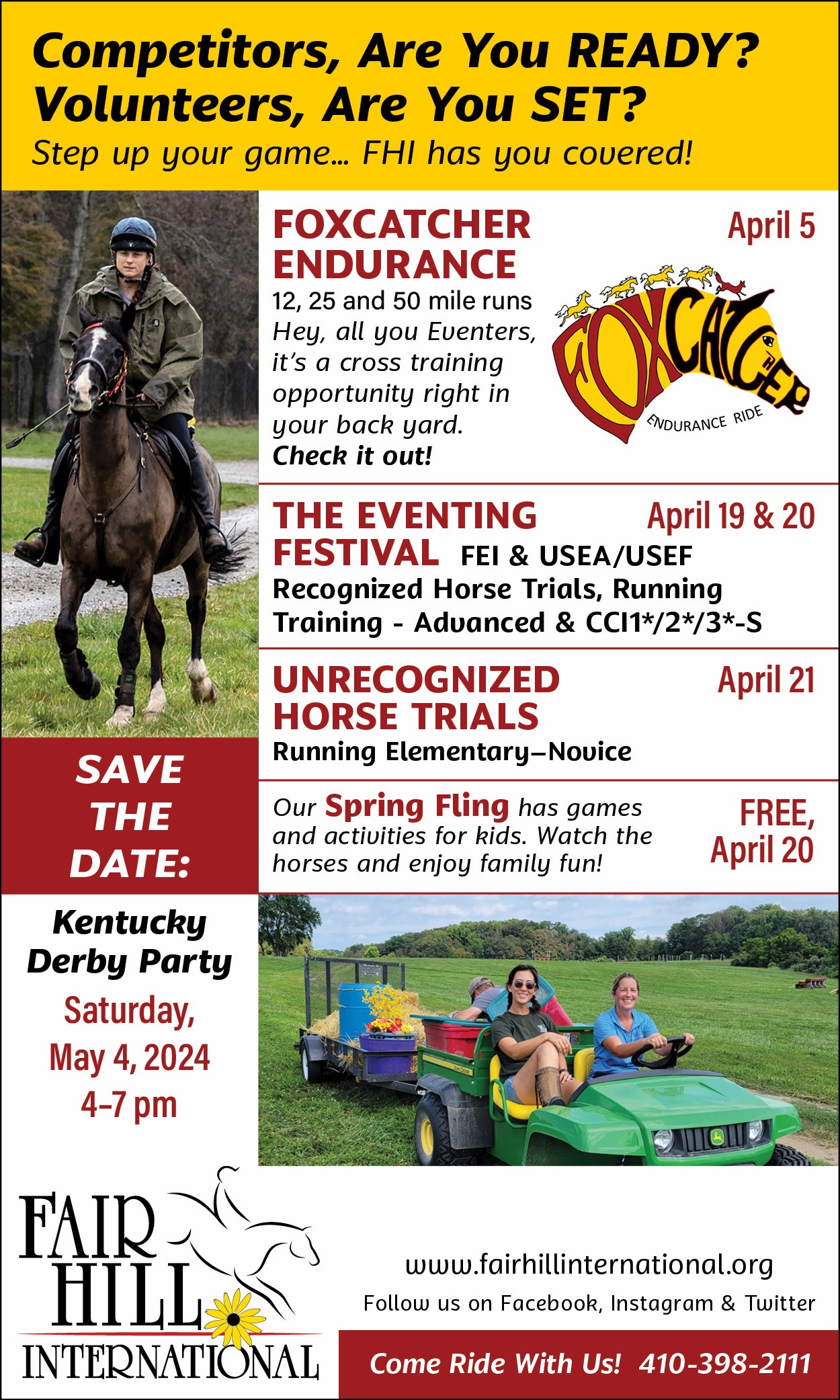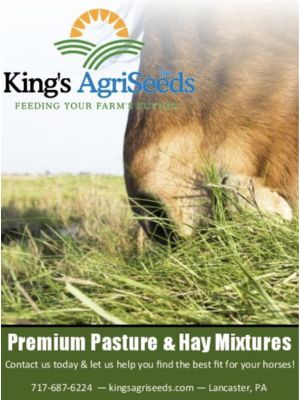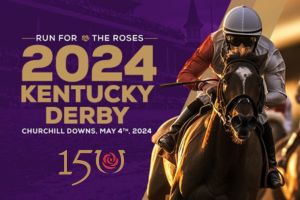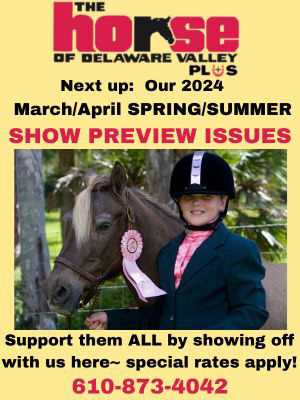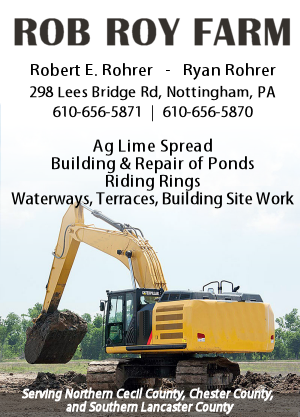FAIR HILL, Md.--The following is a story written by Dorothy Ours and Barbara Heck from the origins of Fair Hill to its present use today and is reprinted from the 2020 Bloodstock Notebook, published in the U.K. to coincide with the December Tattersall Sales.
Fair Hill: From America’s Aintree to America’s Newmarket
Dorothy Ours and Barbara Heck
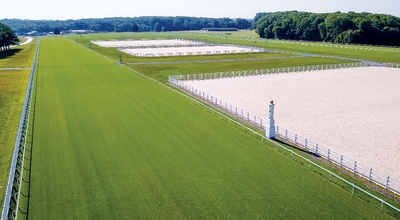 Fair Hill's new uphill pull to the finish and the infield show arenasTucked in the beautiful rolling hills of the northeast corner of Maryland, the foxhunting, steeplechasing and turf racing paradise William du Pont, Jr. created and called Fair Hill nearly a century ago is quietly being transformed into a 6,000-acre global mecca for horses, trainers, riders and fans.
Fair Hill's new uphill pull to the finish and the infield show arenasTucked in the beautiful rolling hills of the northeast corner of Maryland, the foxhunting, steeplechasing and turf racing paradise William du Pont, Jr. created and called Fair Hill nearly a century ago is quietly being transformed into a 6,000-acre global mecca for horses, trainers, riders and fans.
“The whole equestrian world is just so excited about this venue at Fair Hill,” Olympic eventing champion Phillip Dutton said. “It has modern state-of-the-art facilities and footing – it’s just a perfect blend for horsemen. It will arguably be one of the best venues in the whole entire world that people will flock to and want to be a part of.”
“Fair Hill has a special place in my heart”, Jonathan Sheppard, 1980 Hall of Fame inductee and the Leading National Steeplechase Association Trainer of All Time, said. “As my local track, it is wonderful and uniquely multi-faceted.”
“The venue and facilities at Fair Hill are absolutely world class no matter what equestrian discipline is your interest,” Boyd Martin, 2019 Pan American Games Dual Team and Individual Gold Medalist, adds. “It is superbly built and designed in beautiful Maryland and a premier destination for anyone that loves horse sports.”
FAIR HILL came to be in 1926 after Mr. du Pont moved his Foxcatcher Hounds from his family home in Virginia, Montpelier -- now known as the Home of U.S. President James Madison, Father of the Constitution and Architect of the Bill of Rights.
To ensure the safety of his hounds and horses, he built bridges over the roads, tunnels under them and encircled the property with 17 miles of “super fence”, a chain link barrier that was set in three-foot concrete footers with a “T” section across the top.
Even the most aggressive hound (or fox) couldn’t dig under it or climb over it. As an added benefit, the deer so distracting to hounds also found it too high to jump over to enter the property.
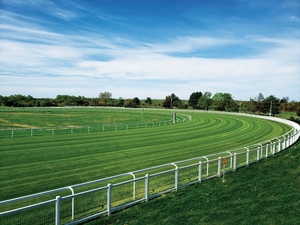 The first turn at today's Fair HillNow owned by the State of Maryland, Fair Hill and its steeplechase and turf course has been evolving since its proud past beginning in 1928 when Maryland’s great ’chaser, Billy Barton, finished a gallant second in the Grand National at Aintree, England, and William du Pont, Jr. considered the question: Coming so close, Billy showed that a horse bred, born, raised, and raced in the United States might have the right stuff to win at Aintree. To produce that winner, what could America do better?
The first turn at today's Fair HillNow owned by the State of Maryland, Fair Hill and its steeplechase and turf course has been evolving since its proud past beginning in 1928 when Maryland’s great ’chaser, Billy Barton, finished a gallant second in the Grand National at Aintree, England, and William du Pont, Jr. considered the question: Coming so close, Billy showed that a horse bred, born, raised, and raced in the United States might have the right stuff to win at Aintree. To produce that winner, what could America do better?
Mr. du Pont thought he could help, and his vision laid the groundwork for all that follows today. He knew horses, he knew steeplechasing, he knew course design. He owned a lot of land. His ideas would take root at Fair Hill. He began doing one of many things that he did so well: reimagining the landscape.
He did it thoughtfully: studying every aspect of the environment, inspecting every aspect of the construction, and waiting for the ground to settle before confirming any racing meet.
“Many people think that all that is necessary is to get a flat section of land, throw up a few flimsy shacks, mark out a track and hold races,” he said. “Nothing is less desirable than a hot, dusty exposed track. What is really desirable is some ground that is relatively high and hilly or rolling, with plenty of trees and with ample ground for the erection of 80 stables and space for parking thousands of cars. Good water is essential. It is easy to clear the path and interior circle of the track of trees not wanted. Much simpler than waiting for years for trees to grow. It makes little difference whether the ground is slightly rolling or hilly. Grading is one of the less expensive factors in the construction of a track. To be successful and attractive and a source of comfort and pleasure, the track should be made beautiful.
“There should be space … [for] at least two acres of ground to be allotted to each stable or barn to reduce the fire hazard should one catch fire. The grounds should be made a center of other sports, such as polo and other out-of-door events, so that the facilities might be used at other times than the few days each year when races are held.”
At Fair Hill, Mr. du Pont used dirt from excavations to build up the area on which the grandstand would sit. The original stand, named the Aintree Grandstand and seating more than 2,000 people, afforded a view of the entire course for the signature race: the Foxcatcher National Cup.
The inaugural Foxcatcher National, about three miles over brush, seemed remarkably intimidating. As Mr. du Pont later wrote to the Sporting Editor of The Spur magazine, “… twelve of the nineteen fences have a minimum height of 5 ft. 10 in. and a maximum height of 6 ft. on the landing side of the fence.”
The giant Foxcatcher National obstacles did have a trick up their sleeve. The top several inches of brush were deliberately flexible, so that horses could slide through while jumping closer to five feet than six. But the task still was tremendous and the appearance stupendously intimidating. From the start, the Foxcatcher National course would be branded as “the Aintree of America.” And it looked the part. On his own land, from his own mind, Mr. du Pont had created something audacious.
The Foxcatcher National Cup looked so awe-inspiring that Aintree might seem almost cozy. Not only facing brush nearly six feet high, but also, as a press release put it, “uphill and downhill stretches which will test to the extreme the most sturdy of the jumpers.” The inaugural Cup drew nine entries. Only four would start.
The third of four races, the Foxcatcher Cup, brought a touch of faraway dreams. Liverton Lodge, owned by Mr. du Pont’s sister, Marion du Pont Scott, lost a fierce duel to Melita—whose owner, Frederick Alfred Upsher Smith of Lake Minnetonka, Minnesota, had made his fortune producing digitalis in the United States but was born in Manchester, England—about 40 miles from Aintree.
“Since the meeting the water jump has been completed so that now it holds water,” du Pont wrote afterward, “and the sod has been lifted on the landing side, which has been graded, and the sod replaced again to make a smooth landing. A further change has been made at the 12th fence near the Beech tree, which is the last of the three fences they jump coming towards you. At this fence we have made a ditch on the landing side 6 feet wide and it will have a stream flowing through the bottom on the same basis as Valentine’s and Beecher’s [sic] Brook. I have no “Beecher” to fall off to christen the brook so will have to be content to have it flowing under a Beech tree.”
Even without a “Beecher,” the Fair Hill meet quickly became a fixture. Its popularity inspired wider publicity, bigger fields, greater seating capacity, and an ever-increasing number of airplanes flying in for the day. After a few planes landed in the infield during the 1937 meet—one during the first race—completing a proper airfield became a priority. The airfield greeted Fair Hill’s fifth anniversary, in 1938.
Those first five years proved and disproved William du Pont’s Grand National experiment. They proved that Fair Hill could propel a horse toward Aintree. Case in point, What Have You, a chestnut gelding who ran second in 1934’s opening ’chase, finished second in the 1935 Foxcatcher National, and won the Foxcatcher in 1936. The “Aintree of America,” however, did not produce actual Aintree success. In the 1937 Grand National, What Have You fell at the second fence. He returned in 1938 and did better—falling at fence number six, the notorious Becher’s Brook.
The Foxcatcher National had tried to pin down something that has no precise formula. Meanwhile, Marion du Pont Scott kept trying to win the Foxcatcher but did not let it control her Aintree hopes. While Fair Hill quickly gained status, she sent her prized ‘chaser Battleship to train and race in England, instead. In 1938, when Fair Hill veteran What Have You fell at Becher’s the first time around, Battleship cleared it twice—on his way to victory.
William du Pont, Jr. lived long enough to see Fair Hill continue as a touchstone for American ’chasers with Aintree ambitions. Battleship paraded there in 1938. In 1965, Jay Trump—the first American winner since Battleship, and the first ever with an American rider—did the same.
Mr. du Pont died on the final day of 1965. Traces of his intentions survived, even after the State of Maryland bought the property in 1975. During the spring of 1976, Ben Nevis won the 3 1/2-mile Foxcatcher Hounds Timber Steeplechase. In 1980, he became the first Fair Hill winner to also win the National at Aintree. Several weeks later, Ben Nevis and his dauntless rider, Charlie Fenwick, galloped between races for a Fair Hill crowd.
“He was pleased with himself. I could definitely feel it,” Fenwick told The Baltimore Sun. “We jogged past the stands the first time and he carried his head high and pricked his ears. Then I turned him around and galloped him through the stretch. He wanted to run flat out, to show the crowd how fast he could go.”
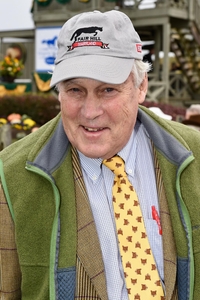 Jay Griswold, Chair of the "Proud Past - Infinite Future" campaign for Fair Hill (Photo by Douglas Lees) Since then, Fair Hill has added many milestones. Its Thoroughbred racing contributions, alone, include the opening of the Fair Hill Training Center in 1982 under the guidance of founder, Dr. John R. S. Fisher. The inaugural Breeders’ Cup Steeplechase, in 1986, plus three other runnings brought national attention to the venue. And within the last 15 years, it served as the home base of two Kentucky Derby winners, Barbaro and Animal Kingdom.
Jay Griswold, Chair of the "Proud Past - Infinite Future" campaign for Fair Hill (Photo by Douglas Lees) Since then, Fair Hill has added many milestones. Its Thoroughbred racing contributions, alone, include the opening of the Fair Hill Training Center in 1982 under the guidance of founder, Dr. John R. S. Fisher. The inaugural Breeders’ Cup Steeplechase, in 1986, plus three other runnings brought national attention to the venue. And within the last 15 years, it served as the home base of two Kentucky Derby winners, Barbaro and Animal Kingdom.
All of this potential—and fulfillment—reaches back to its proud past beginning in 1934. Back to Battleship, parading here in 1938, standing only 15.2 hands, he drew amazed appreciation from The Maryland Horse magazine: “Battleship is a very imposing horse, but his size makes you wonder just how he got over those terrible high fences at Aintree, unless he has some hidden wings.”
Battleship did not use his wings here at Fair Hill, but he made a lasting point. That’s what racing is: find a place, and purpose, that brings out those wings. Looking back in time—and flying forward—that’s the purpose Fair Hill so beautifully serves.
Fair Hill Foundation leaders today see an infinite future flying forward toward a facility that will rival England’s Newmarket. With a $20 million public-private partnership transforming the property into a truly one-of-a-kind facility for multiple equestrian disciplines in a world-class equestrian center in the Mid-Atlantic, Fair Hill will be the only place in the world with a 350-acre Thoroughbred training center that has produced Breeder’s Cup, Kentucky Derby and multiple graded stakes winners, a one-mile irrigated turf course for flat and jump racing, an international five-star three day event venue, regulation arenas for show jumping and dressage, 6,000 acres of public riding trails and fields, and a state-of-the-art equine therapy center.
The new Fair Hill will be able to host flat racing, jump racing, eventing, show jumping, dressage, and many other horse sports – all with international standards. In October 2021, the world’s attention will be on Fair Hill. Ian Stark, the world-renowned Scottish course designer, is leading the development of the world-class 5-Star Event course, scheduled to host its first Fédération Equestre Internationale (FEI)-sanctioned international 5-Star three-day event competition. This event will be only the second international 5-Star event in the United States; the Land Rover in Kentucky is the first.
In Spring 2021, the 86th running of the Fair Hill Races will premier on the new turf course. The new realigned track features advanced irrigation, rail systems, new turf, livestream capacity, designated and protected crossing and access points, a mile distance with uphill pull on the home stretch, and wider, banked turns so footing will be maintained at the highest safety standards for horses. Providing ample training opportunities and more racing days at Fair Hill are at the core of the vision.
Because of the State of Maryland’s ownership, Fair Hill is free from developmental pressure. Attracting thousands of equine participants in racing, showing, eventing, dressage, trail riding, foxhunting and the millions of potential enthusiasts, spectators and support in the Mid-Atlantic, Fair Hill is close to New York City, Washington, D.C., Philadelphia, and Baltimore.
Fair Hill Foundation Proud Past*Infinite Future Campaign Chair, Jack S. Griswold, sums it up, ”Mr. du Pont’s vision is underpinning all the planning that has gone into this transformation. In everything we do, we are committed to preserving his legacy while reimagining the landscape just as he did in 1928. We are grateful to everyone who is joining us in taking Fair Hill into its infinite future.”
Dorothy Ours is the author of Battleship and Man o’ War. A consultant to the Fair Hill Foundation, Barbara Heck has wonderful memories of hunting with the Foxcatcher Hounds in the 1970s.

















